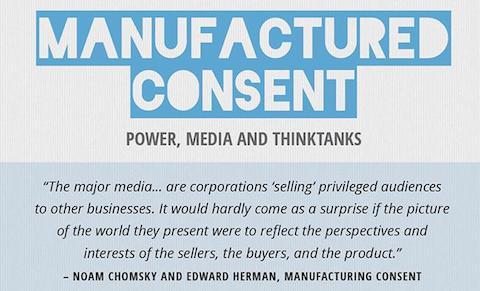
Firstly, a brief introduction to Manufacturing Consent which is a book co-authored by Edward S. Herman and Noam Chomsky that clearly analyses how the media works and influences public opinion.
Media as commercial entities
- Past
From the media age when information was disseminated on papyrus to today’s Internet media age that can be seen everywhere, what has advanced is human technology and civilization, but behind this, there is something that has remained unchanged for ages, that is commercial interests. A long time ago, human beings used papyrus to transcribe news and information for dissemination, but the people who had the news in the first place and even the people who transcribed the information belonged to the upper echelons of the human class, and they had the right to grasp and disseminate the news, which also meant that the content of the dissemination was something that they had the opportunity to influence and control.

- Present
Nowadays, in the Internet era, the media is a huge system that needs to be supported by interests, and any news item needs to be reviewed and judged by officials before it officially appears in the public eye. Such official bodies could mean national governments, the management of social media platforms, or even the henchmen of different political parties. The media is dependent on the power and interests of the upper echelons of these classes, which support their operations through advertisements they sponsor and the cash they generate from their communications. As the book says, the media is not an objective and neutral transmitter of information. Different media may report the same news from different perspectives because of the different decision-makers behind the media, which creates different viewpoints and gives the readers different opinions or biases. The media is like an opinion leader in the two-step flow theory, who receives the communication intentions of the decision maker and then edits the information to deliver it, with a certain degree of guidance in the edited content.
Reference
Han, R. (2015). Manufacturing Consent in Cyberspace: China’s “Fifty-Cent Army”. Journal of Current Chinese Affairs, 44(2), 105-134. https://doi.org/10.1177/186810261504400205
Chomsky’s Philosophy | Noam Chomsky – Manufacturing Consent Noam Chomsky – Manufacturing Consent – YouTube

The history of Papyrus was insightful as I always knew “control” was a thing way before our time but didn’t know what type of methods were used. It was smart of you to compare past and present but made me realize that actually, they can’t be compared because their agenda remained the same, just different eras.
I agree with your point. The media have a degree of direction in what is edited. Differences in the audience’s knowledge structure, social status and decoding context in relation to the communicator can lead them to decode the content differently. In this case, the receiver needs to have a complete sense of autonomy in order to consciously avoid being manipulated by the media.
Yes, commercial interests are at the centre of all that is behind it, and people in the upper class control some of the messages they want to convey to the public through capital, so the media is not an objective and neutral medium of communication, and so audiences are sometimes misled by these messages, which causes them to fail to see the truth of certain things.